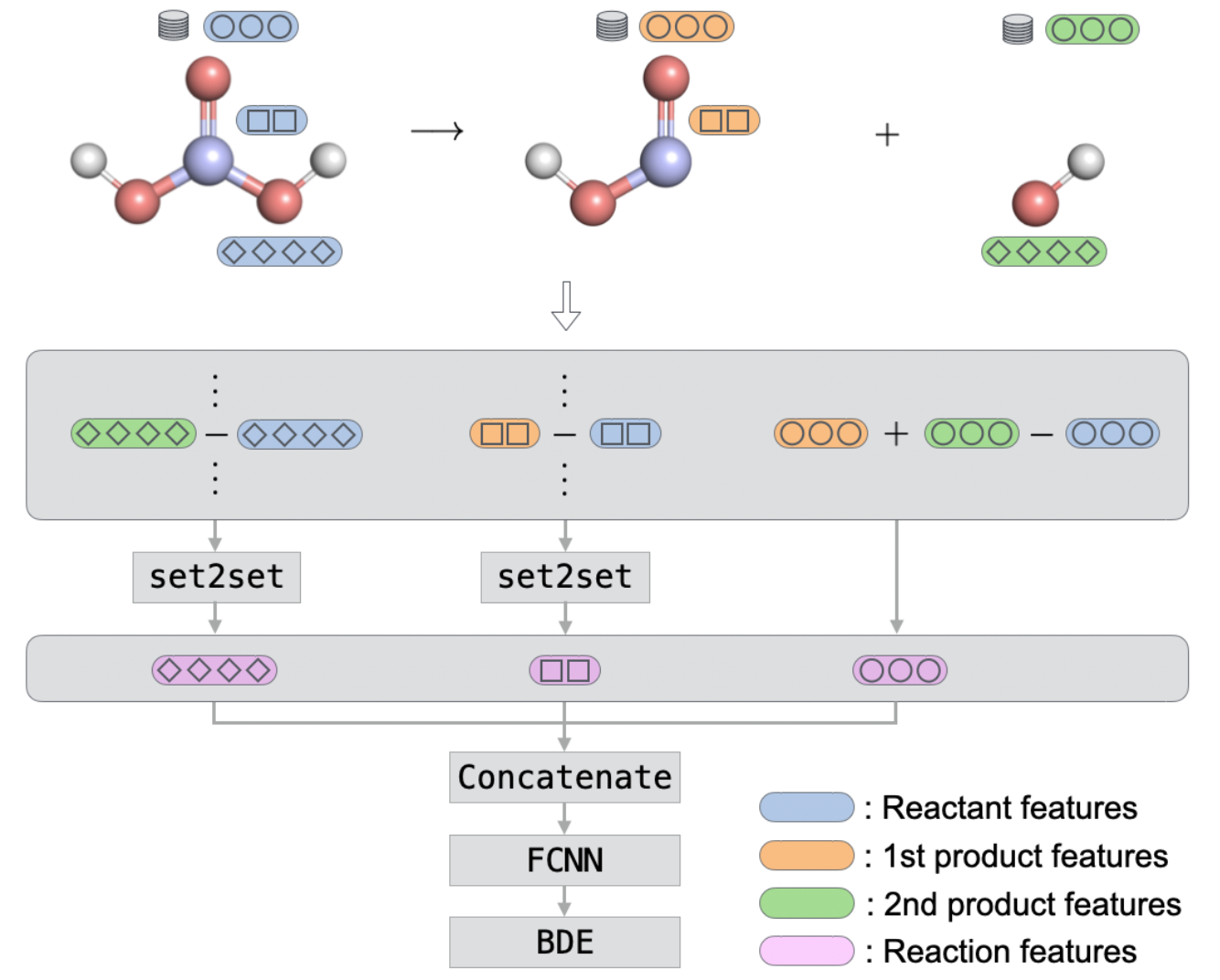BonDNet is a graph neural network model for the prediction of bond dissociation energies (BDEs). It can be applied to both homolytic and heterolytic bond dissociations for molecules of any charge. This model is described in the paper: BonDNet: a graph neural network for the prediction of bond dissociation energies for charged molecules, Chemical Science, 2021.
Currently, we support installation from source:
-
create a conda environment
conda create --name bondnet conda activate bondnet conda install python==3.7
-
install dependencies (see their websites for more options)
conda install pytorch==1.6.0 torchvision -c pytorch # https://pytorch.org conda install dgl==0.5.0 -c dglteam # https://www.dgl.ai/pages/start.html conda install pymatgen==2020.8.13 -c conda-forge # https://pymatgen.org/installation.html conda install rdkit==2020.03.5 -c conda-forge # https://rdkit.org/docs/Install.html conda install openbabel==3.1.1 -c conda-forge # http://openbabel.org/wiki/Category:Installation
-
install this repo
git clone https://github.com/mjwen/bondnet.git pip install -e bondnet
For a quick prediction of the BDEs for a single molecule, try the live demo at:
Alternatively, a command line interface (CLI) bondnet is provided for batch predictions.
(Optional. We suggest switching to the pretrained branch for using the bondnet CLI
to make predictions. It should be more stable. To install the pretrained branch
, do cd bondnet, then git checkout pretrained, and finally pip install -e .)
-
A single molecule given by a
SMILESorInChIstring, e.g.:bondnet single "C1COC(=O)O1" -
Multiple molecules listed in a file. Supported molecule format includes
sdf,pdb,smilesandinchi, e.g.:bondnet multiple molecules.sdf -o results.sdf
-
Explicitly specifying the bond dissociation reactions. In this mode, a
molecluefile listing all the molecules and areactionfile listing all the bond dissociation reactions are needed. Supported molecule format includesgraph,sdf,pdb,smiles, andinchi. e.g.bondnet reaction -t graph molecule_graphs.json reactions.csv bondnet reaction -t sdf molecules.sdf reactions.csv
More detailed instructions, example input files, and description of the file formats, can be found here.
The train_bde.ipynb Jupyter notebook shows
how to train BonDNet on a BDE dataset of both neutral and charged molecules.
Try it at:
The train_bde.ipynb Jupyter notebook trains a model on CPU. If you want to train on GPUs (a single GPU or distributed), take a look at train_bde_distributed.py. A model can be trained by
python train_bde_distributed.py molecules.sdf molecule_attributes.yaml reactions.yamlMore detailed instructions, example input files, and description of the file formats, can be found here.
